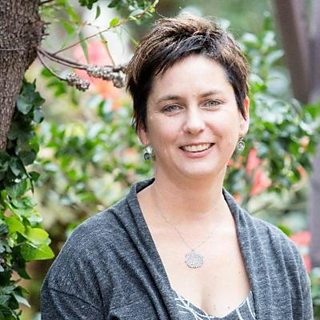The ±«Óãtv's incomparable opportunities for training and career progression, compared to other public broadcasting institutions, motivated women from around the world to seek employment there. Newly released interviews and archival documents show how Australasian women who worked for the ±«Óãtv excelled at telling the world about life in Britain and the Commonwealth.
Like many other women employees, Australian Muriel Howlett entered the ±«Óãtv as a typist, in 1935. She stayed for 32 years, eventually becoming a respected senior producer and news editor in the ±«Óãtv World Service.
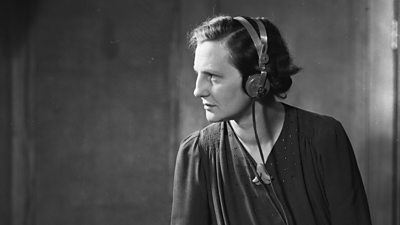
In 1938, on the personal recommendation of John Reith, who was about to leave the ±«Óãtv to become chairman of Imperial Airways, Howlett was selected as the ±«Óãtv representative on board the Cordelia flying-boat from Southampton to Sydney, the inaugural flight of the Empire Air Mail passenger and mail scheme, jointly operated by Britain and Australia.
The service was a symbol of both progress and modernity, and a practical means of strengthening empire unity through commerce and communications, and the flight received wide press coverage.
Howlett broadcast several commentaries for the ±«Óãtv during the nine-day journey, making her one of the first female outside broadcast reporters.
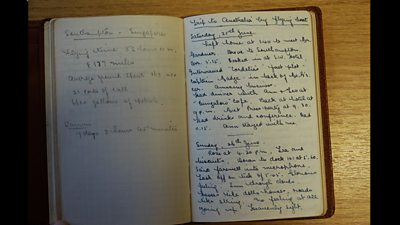
Howlett's journal of her trip, held in the ±«Óãtv's written archive, conveys her sense of wonder at the miracle of modern air travel:
"Said farewell into microphone. Took off on tick of 5.45. Glorious feeling. Sun through clouds. Houses like dolls houses, roads like string. No feeling at all going up! Heavenly sight."
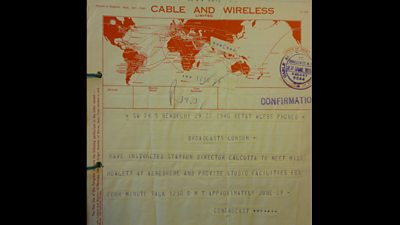
Howlett's broadcasts for the ±«Óãtv were seen as so important, that when it looked like the Cordelia might not land at Singapore in time for her scheduled transmission, a message was sent to the pilot asking him to speed up. Howlett arrived at the studio just in time, as she noted in her journal:
"Special launch awaiting me to go ashore & car ready to dash for studio on landing. Telegram from Bangkok failed to arrive and booking left as before. Just fell on microphone – without Captain Allan, so had to revise script hurriedly. Had tea, cabled London, returned hotel, changed, interviewed Captain Allan, dined, cabled Allan’s message and went gladly to bed." - Muriel Howlett's journal from the Cordelia.
In Australia, Muriel Howlett visited the Australian Broadcasting Commission, where she made a strong impression on George Ivan Smith, then a young talks producer. Having 'grown up in isolation', this pivotal moment was Smith’s introduction to the ±«Óãtv as the empire's linchpin.
The following year Smith was seconded to the ±«Óãtv where he became Director of the Pacific Service, and set about recruiting men and women broadcasters from around the British Commonwealth.
As Smith recounts in this oral history interview, the ±«Óãtv relied on the local knowledge of international broadcasters to help shape programming to suit the service's specific target audience, and to strengthen links between Britain and its dominions:
Like many other Commonwealth broadcasters, Muriel Howlett built a successful career at the ±«Óãtv, where she attained a senior position in Overseas Talks and Features.
In a letter sent to her after twenty-five years of service at the ±«Óãtv, the Director-General acknowledged that 'her own link with the Commonwealth' had enriched her 'considerable' contribution to programmes for overseas listeners.
The Second World War increased opportunities for women, for example by opening up previously male-only occupations such as Engineering. It also gave women from around the Commonwealth and Empire the chance to work in areas of broadcasting often denied to them in their home countries, such as talks producing, announcing, and news.
In the Pacific Service alone, there were at least four Australasian women working as talks producers during the war: Theaden Hancock, Noni Wright, Evelyn Davy and Ann Shead. Noni Wright, later an acclaimed documentary film director, produced radio programmes aimed at listeners in her home country of New Zealand, including 'With the New Zealanders in Britain':
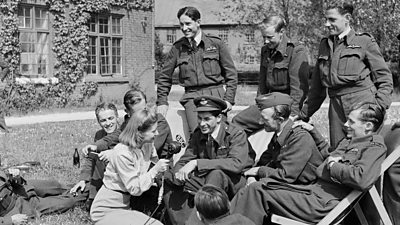
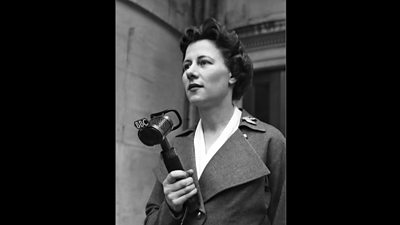
Australian Mary Hill joined as an announcer on the General Overseas Service in 1945, and later worked on Woman's Hour and as an outside commentator of social events and at Ascot.
Hill’s education at a prestigious private girls' college in Melbourne, and her audible Britishness, would have eased her assimilation into the class-conscious ±«Óãtv. Viewers of Queen Elizabeth's Coronation on ±«Óãtv television in 1953, for which Hill was one of the commentators, would have been unlikely to discern her Australian origins:
Australian Peggie Broadhead began her broadcasting career at the ABC in the 1930s.
During the Second World War she worked with Mary Somerville in Schools Broadcasting at the ±«Óãtv, and also at the Malayan Broadcasting Corporation.
She returned to the ±«Óãtv in 1946, initially as a Talks Producer in the North American Service, and later moved to ±«Óãtv Television, where she became a producer of educational programmes. Like Muriel Howlett and many other Commonwealth women, Broadhead had a long and successful career at the ±«Óãtv.
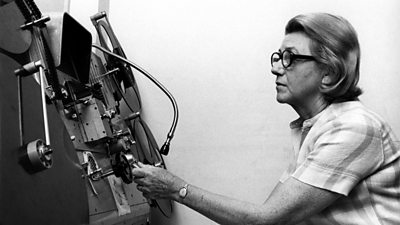
The ±«Óãtv often relied upon the local knowledge and contacts of Commonwealth broadcasters, as can be seen in this engaging 1974 television documentary, produced by Broadhead, which educated British school children about the lives of people living on remote cattle stations in Australia’s ‘top end’:
In succeeding decades, women broadcasters continued to travel to the centre of the Empire, in the hope of benefiting from what they believed were the superior training, facilities and opportunities offered by the ±«Óãtv.
The Corporation undoubtedly advanced the careers of many women from the Empire and Commonwealth - but it was not simply a one-way relationship. As these stories show, the ±«Óãtv also profited from their expertise and their experiences.
Further reading:
- Dr. Simon Potter, Broadcasting Empire: The ±«Óãtv and the British World, 1922-1970 (Oxford: Oxford University Press, 2012)
Walking the Line: Venu Chitale
-
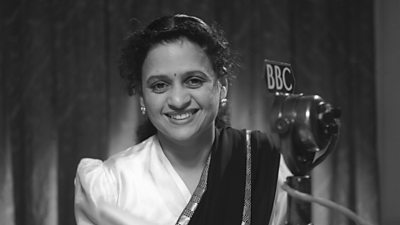
Walking the Line: Venu Chitale
The programmes of Marathi broadcaster Venu Chitale, explains Sejal Sutaria, illustrate how Indians hired by the ±«Óãtv the Second World War faced conflicting needs - to establish their solidarity with Britain during the war while maintaining their allegiance to Indian independence from the Raj.

